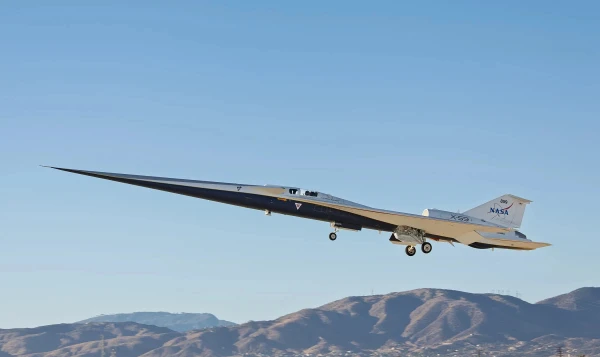
The X-59 features an unusually long, pointed nose.
At a secret U.S. Air Force base in Palmdale, the first test flight of the unique silent supersonic aircraft NASA X-59 (QueSST) — a creation of Skunk Works (a division of Lockheed Martin) — has been successfully completed.
The developers of the X-59 have managed to solve an extremely complex task — using entirely new aerodynamics to eliminate the deafening sonic booms of up to 140 decibels at the moment of breaking the sound barrier, which previously created significant problems for residents of nearby towns.
The X-59 features an unusually long, pointed nose, a special fuselage shape, and wings that slice through the single shock wave into several. As a result, the previous 140 dB has been reduced to a quite acceptable 60–80 decibels, which is roughly equivalent to the sound of a car door closing.
However, it should be clarified — the first flight of the X-59 was conducted at subsonic speed. Supersonic flights will begin in the coming months and will occur directly over populated areas, after which NASA specialists plan to gather feedback from residents about the level of sound effect. If the results are positive, the ban on flights of future passenger supersonic aircraft over populated areas will be reconsidered by regulators.















Leave a comment